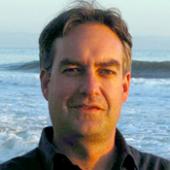Scientists Launch Internet Protocol Research Center
The global Network Development and Deployment Initiative formed to facilitate research on new platforms and architectures based on OpenFlow technology.
June 26, 2017

The Internet2 networking consortium, Indiana University, and Stanford University's Clean Slate Program have launched a research center that will create a new network platform for global scientific research.
The Network Development and Deployment Initiative (NDDI) will create multiple virtual networks that allow network researchers to test and experiment with new Internet protocols and architectures. It will also enable domain scientists to accelerate their active research with collaborators worldwide.
The NDDI includes a new Internet2 networking service called the Open Science, Scholarship, and Services Exchange (OS3E). Combined with NDDI, the OS3E will connect Internet2's regional network connectors with international exchange points and key collaborating partners through a flexible open policy layer 2 network. Examples include connections with CANARIE in Canada, GEANT in Europe, JGNX in Japan, and RNP in Brazil, among others.
"The open source nature of this network initiative extends a brand new platform for production network services with the ability to develop an open source development testbed in parallel," said Dave Lambert, Internet2 president and CEO, in a statement. "While the OS3E will be of immediate benefit to scientists, the NDDI will introduce major new capabilities for network researchers and other academic disciplines in the future. Together these create opportunities for global network research and collaboration."
The NDDI and OS3E platform will support projects that include the global exchanges of massive datasets, including radio astronomy and climate modeling experiments, to large-scale network research initiatives like the National Science Foundation's (NSF) Global Environment for Network Innovations project.
The NDDI was built using OpenFlow technology, an open standard that enables researches to run experimental protocols in campus networks. Through the OpenNetwork's "software defined networking" (SDN), researchers will "have the opportunity to reinvent the technical underpinnings of the Internet2 network, while domain researchers collaboratively pursue education and research," according to a white paper on the subject.
Indiana University is leading the development of the NDDI OpenFlow software that will provide easily provisioned, persistent VLAN capabilities as well as the capability for network researchers to request "slices" of the network for development purposes. Once new technologies are created and proven within these network research slices, they can then be easily transitioned into new production services for the Internet2 community. The partnership will also leverage Indiana University's recent NSF grants for the America Connects to Europe (ACE) and TransPAC 3 projects, which are expected to extend NDDI and OS3E global reach into Europe and Asia.
"The Internet infrastructure was not designed for continued evolution," said Guru Parulkar, executive director of the Clean Slate Internet design program and consulting professor of electrical engineering at Stanford University, in a statement. "OpenFlow/SDN will change this. With an OpenFlow/SDN network, owners and operators can constantly improve and optimize their network to best serve their needs--whether it is a data-center network, a wide-area network, an enterprise, or a home. Because NDDI is based on OpenFlow/SDN, researchers will for the first time be able to try out new ideas in a nationwide production network with real users and real traffic."
Internet2 will begin creating the NDDI by deploying switches and supporting hardware throughout its U.S. area networks, including more than 20 regional network connectors that serve more than 10 million individual host computers. Services are expected to be available in the beginning of fall 2011.
About the Author
You May Also Like




